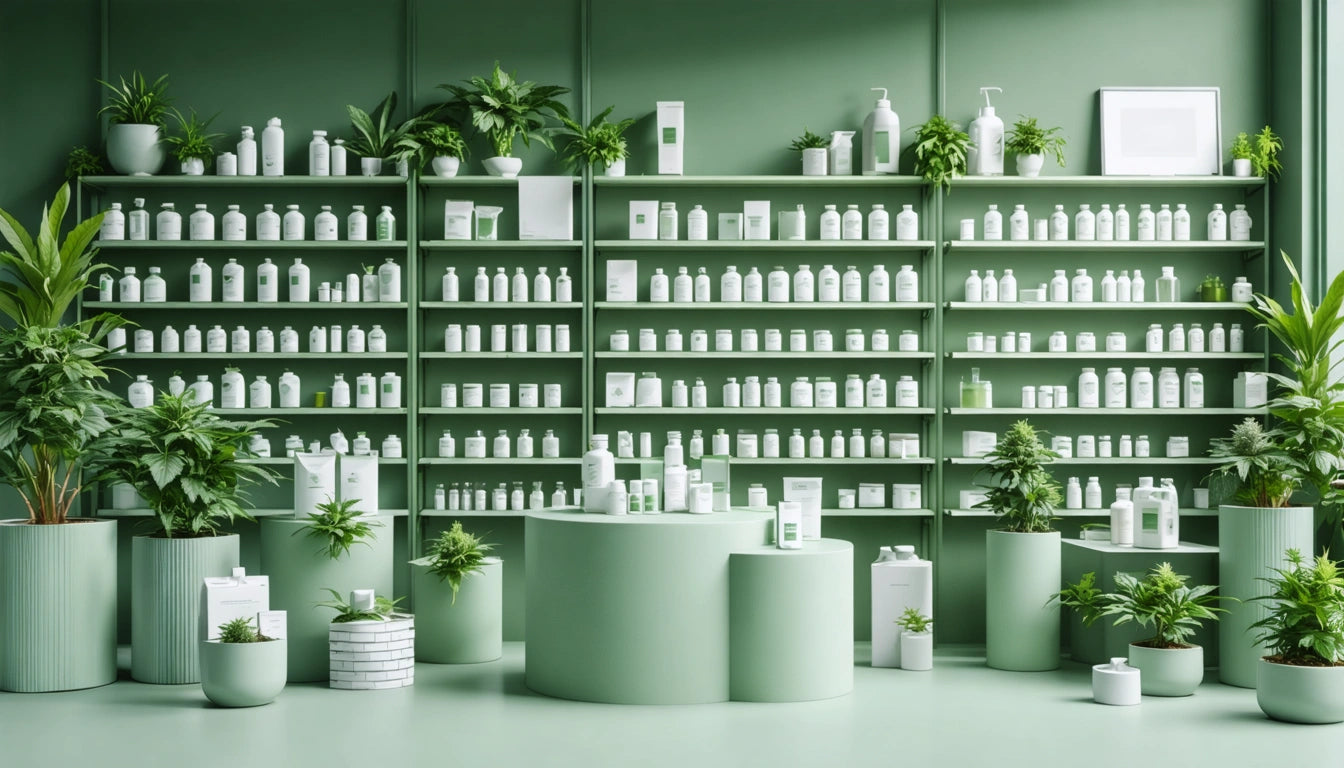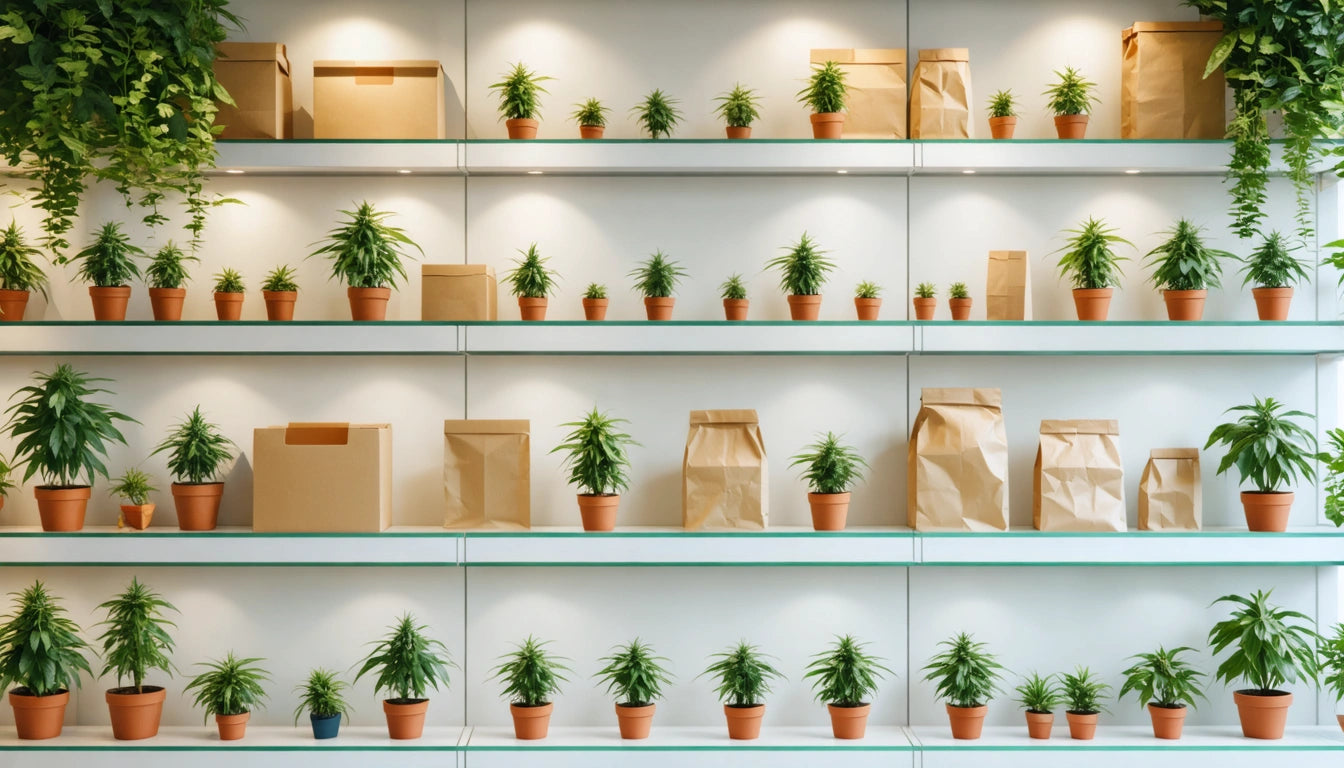Table of Contents
Cannabis dispensaries face unique challenges when it comes to product display and inventory management. With limited retail space and an ever-expanding product selection, maximizing shelf space has become a critical factor in operational efficiency and sales performance. The right packaging formats can dramatically increase product density while maintaining visibility, accessibility, and regulatory compliance.
Space Optimization Challenges in Cannabis Retail
Dispensaries typically operate in spaces ranging from 1,500 to 3,000 square feet, with product display areas occupying only a portion of that footprint. Within this limited space, retailers must showcase hundreds of SKUs across multiple product categories while adhering to strict display regulations that vary by state.
According to consumer preference data, customers spend an average of just 7-15 seconds scanning a product section before making a selection. This makes efficient shelf organization and visibility paramount for capturing attention and driving sales.
Top Space-Saving Packaging Formats
1. Stackable Containers
Cylindrical and square containers with flat tops and bottoms create stable, space-efficient towers. These are particularly effective for flower products and concentrates. Some innovative designs include interlocking features that prevent toppling while maximizing vertical space.
For processing operations, industrial cannabis grinding equipment can prepare product for these stackable containers with consistent texture, ensuring uniform filling and stable stacking configurations.
2. Thin-Profile Boxes and Pouches
Slim rectangular boxes and flat pouches offer excellent shelf density for pre-rolls, vape cartridges, and edibles. These formats can be arranged in book-like rows, allowing more products to fit in the same footprint. Magnetic closure systems add premium appeal while maintaining a thin profile.
3. Modular Display Systems
Custom display trays and inserts designed to work with specific packaging formats can increase product density by 30-40%. These systems often feature tiered arrangements that improve product visibility while maximizing units per shelf.
As outlined in this guide on planogramming, modular systems allow for consistent merchandising across multiple locations while optimizing space utilization.
Vertical Merchandising Strategies
Vertical space utilization is often overlooked in dispensary design. Effective strategies include:
- Wall-mounted display systems for lightweight products
- Gravity-fed dispensers for small, uniform packages
- Tiered shelving with integrated lighting
- Vertical brand blocking to create visual impact
These approaches not only maximize space but can also create more intuitive shopping experiences. Research on impulse purchasing shows that products displayed at eye level (4-5 feet high) generate significantly higher sales, making vertical organization a strategic consideration.
Compliance Considerations for Space-Efficient Packaging
Space optimization must never compromise regulatory compliance. Key considerations include:
Child-Resistant Requirements
All cannabis packaging must maintain child-resistant functionality regardless of format. Compact designs like push-and-turn containers and certified pouches offer space efficiency without sacrificing safety. Compliance guidelines should be consulted when selecting space-saving formats.
Labeling Visibility
Required warning labels and product information must remain clearly visible even when products are tightly arranged. Some innovative solutions include:
- QR codes linking to detailed product information
- Peel-back labels that expand when opened
- Strategic placement of required information on viewable panels
When implementing inventory management systems, ensure that barcode placement is standardized for efficient scanning in tight shelf arrangements.
Implementation Strategies for Retailers
Converting to space-efficient packaging requires careful planning. Consider these implementation approaches:
Phased Category Conversion
Start with high-volume, space-intensive categories like flower or pre-rolls. Measure results before expanding to other product types. This approach allows for testing and refinement without disrupting the entire store layout.
Vendor Partnerships
Work with key product suppliers to standardize packaging dimensions. Some dispensaries have reduced SKU footprints by 25% through collaborative vendor programs that establish preferred packaging specifications.
Staff Training
Efficient back-of-house storage and restocking procedures are essential for maintaining organized displays. Training staff on planogram compliance and space-efficient stocking techniques ensures consistency.
Future-Focused Space Optimization
The cannabis retail landscape continues to evolve with new product categories and consumer preferences shaping packaging needs. Forward-thinking dispensaries are implementing flexible shelving systems that can adapt to changing inventory requirements without major renovations.
Sustainable packaging options are increasingly important to consumers and can offer space benefits through reduced material usage. Reusable packaging systems may represent the next frontier in both sustainability and space efficiency.
By adopting these space-maximizing packaging formats and implementation strategies, dispensaries can significantly increase their product density, improve customer experience, and ultimately drive higher sales per square foot while maintaining full regulatory compliance.











Leave a comment
All comments are moderated before being published.
This site is protected by hCaptcha and the hCaptcha Privacy Policy and Terms of Service apply.